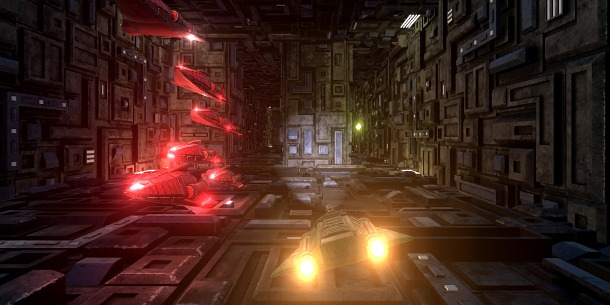Godot team ships Godot 3.0
Originally posted on 19 September 2017. Scroll down for news of the final release.
The Godot team have released a sneek peak at the new features due in Godot 3.0, a major update to the open-source game engine that introduces a new 3D renderer, new audio engine, and early VR support.
The video was actually released last month, but the team has just announced that it has just secured enough Patreon funding to support its first full-time developer, so this seemed like a good time to revisit it.
For artists: new 3D render engine, 2D soft shadows, GPU-accelerated particles, and a new audio engine
Originally developed in-house at Argentinian game developer Okam Studio and made open-source in 2014, Godot was described as having “a similar feature set to Unity”, but geared more towards 2D than 3D titles.
The 3.0 update goes quite some way towards redressing that balance, introducing a new 3D render engine with much more advanced features: physically based shading, screen-space reflections and real-time GI.
The developers describe Godot as “the first engine to offer the full range of Disney’s principled BSDF [shading model, also used in a range of DCC tools] for physically based rendering”.
The update also improves Godot’s post-processing capabilities, adding multi-stage bloom and glow effects.
Other improvements include some rather attractive 2D soft shadows – you can see them at 01:35 in the video – and a GPU-accelerated 2D/3D particle system capable of supporting “millions of particles”.
Outside of the graphics tools, other major features include a new audio engine with support for positional sound and other real-time effects.
For programmers: C# support, visual scripting, improved HTML5 export and VR support
Programmers get improved support for C++ via the new GDNative module and support for C#, along with VisualScript, a new visual scripting system.
The process of importing files has been streamlined; and there are new customisable export presets, while the HTML5 exporter now supports WebAssembly and WebGL 2.
There is also a new high-level networking API for multiplayer games, and early support for VR and AR: initially focused on the OpenVR SDK in order to support HTC Vive headsets.

Updated 31 January 2018: Godot 3.0 is now officially available.
As well as the features listed above, the release introduces support for the industry-standard Bullet physics library: now Godot’s native physics system, although the old physics backend is still available.
The update also makes Godot one of the first tools to support glTF 2.0, Khonos Group’s open format for real-time 3D assets, of which the developers are enthusiastic supporters.
Other changes include a new UI theme system with better support for HiDPI displays, along with a number of smaller graphics features, which you can find listed on the Godot blog.
The blog post is worth reading in full for its discussion of the roadmap leading up to the 3.0 release, and the new features planned for future releases.
Godot 3.1 is scheduled to rework the animation tree and occlusion culling system; and to restore the visual material editor, removed in 3.0 because of lack of backwards compatibility between new and old renderers.
There’s also a rather heartwarming section about the growth of support for Godot on Patreon: the team now has two full-time developers, and hopes to hire a full-time project manager.
Availability
Godot 3.0 is available for 32-bit and 64-bit Windows, Linux and OS X. Source code is available on GitHub.
Read an overview of the new features in Godot 3.0 on the Godot team’s blog
